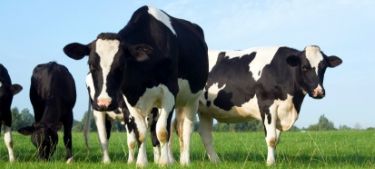|
Methane, Anaerobic Digesters and Biogas
The anaerobic decomposition of manure and plant matter releases methane. While it is never likely to be a major source of energy nationally, capture of this biogas can produce useful amounts of energy. More importantly, preventing methane release protects the environment because it is a potent greenhouse gas. Human activity is sometimes involved, but the formation occurs all the time in nature. I found this out as a young boy. Adventures With Swamp GasGrowing up, one of my friends lived in a house close to some woods that gradually gave way to a grassy marsh bordering a stream. In dry weather, the area was a mucky wetland. In wet weather, a foot or two of water covered the marshy bottom. At those times, we used a make-shift raft (inner tubes and a couple of boards) to paddle out on the shallow water. Once out there, we poked the swampy bottom with a broom stick. Usually, some gas bubbled up. We captured the gas in upside-down jars. The motivation for this collection is that the gas was very flammable. It made a quite impressive flash when we touched a match to it. Fascinating stuff for young boys. This is the same friend I made gunpowder with (charcoal from filing briquettes, sulfur from the garden shop and the nitrate from his father-the-chemist who thought he was simply restocking his son’s chemistry set). Having survived these and similar adventures relatively unscathed inclines me to believe in guardian angels. Anyway, we called the gas swamp gas. It was methane. Methane and Global WarmingDecomposition of plant material in anaerobic (without oxygen) conditions produces methane. Although there isn’t as much of this as there is carbon dioxide in the atmosphere, it is about 20 times more effective than carbon dioxide at trapping heat on earth. If we want to minimize the greenhouse effect, releasing this gas to the atmosphere is not good. Some experts estimate that methane causes about 10% of global warming. The breakdown of manure from cattle, dairy cows, poultry, sheep etc. releases a considerable amount. Capturing this biogas protects the atmosphere and provides a useful fuel. Anaerobic DigestersThis where anaerobic digesters come in. They speed the process of digestion and capture the methane as they do so. As a side benefit, the anaerobic breakdown process produces useful compost and reduces the chance of groundwater contamination by the manure. Farms often use anaerobic digesters as a way of dealing effectively with the large amount of manure their animals produce. The energy is a bonus that helps offset the cost of the process. The benefits of using anaerobic digesters include: Reducing odor Preventing release of green house gases Providing quality compost than can be sold or used on the farm Protecting ground water Killing weed seed in the manure Reducing disease-causing bacteria in the manure Producing energy How Digesters WorkBacteria do the work of anaerobic digestion. Many different strains of bacteria produce different waste products. The waste product of one strain of bacteria can be a nutrient for another. The end result of it all is the release of biogas (also called digester gas). If you’re interested in the bacterial sequence of digestion, there are three main phases. Hydrolytic bacteria digest particulate matter into dissolved compounds. Acidogenic bacteria convert these compounds into acids, such as acetic acid, and hydrogen. Finally, methanogenic bacteria consume the acids and produce methane and carbon dioxide. The exact composition of biogas varies. Typically, it will be about 60% - 80% methane, 20% - 30% carbon dioxide and the remainder a mixture of other gases such as hydrogen and nitrogen. Proper bacterial action requires a minimal temperature. Different bacteria are most active at different temperatures and different systems take advantage of specific characteristics. Biomass LinksClick here to go to Biomass Energy Click here to go to Wood Burning Click here to go to Advantages of Biomass Energy Other LinksClick here to go to Alternative Energy Primer Home from Methane, Anaerobic Digesters and Biogas |